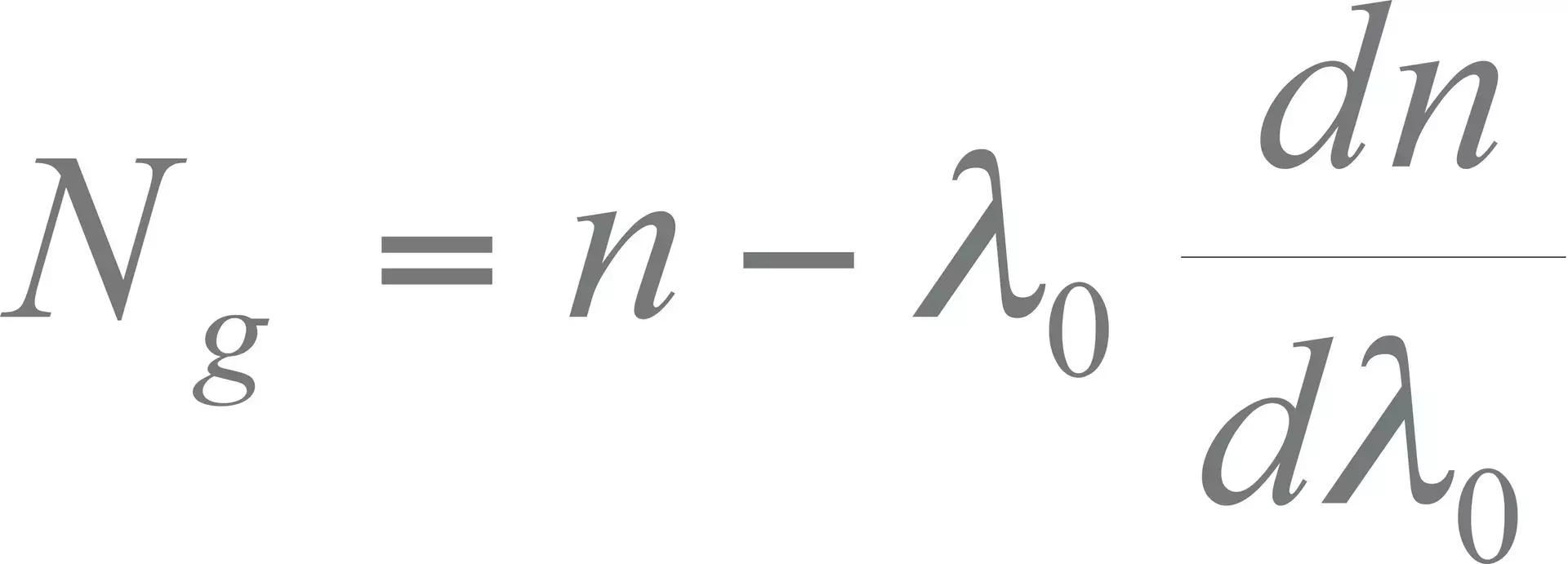Group Index and Velocity
Light typically has some spread of wavelengths, as it is never truly a single pure colour. The group index reveals the way such light will behave, and becomes important when considering light pulses and the widening in time (temporal broadening) of input signals of many colours. The group velocity is the speed at which a light pulse will travel in a material and takes into account the phase velocity of all the individual wavelengths present.
Generally the group index is higher than the phase index of the light within a pulse, and so the whole pulse travels more slowly than the light at any particular wavelength, which is why the pulse spreads out as it travels.
When considering a group of wavelengths, such as a source of some finite bandwidth, the change in index with wavelength, material or chromatic dispersion, can become important. The group index, Ng, is related to both the refractive index, n, and its wavelength dependence.

A pulse of radiation with a finite spread of wavelengths will travel at the group velocity, vg

Related Terms: Chromatic Dispersion, Differential Group Delay (DGD), Group Delay Dispersion (GDD), Group Index and Velocity, Group Velocity Delay (GVD), Refractive Index